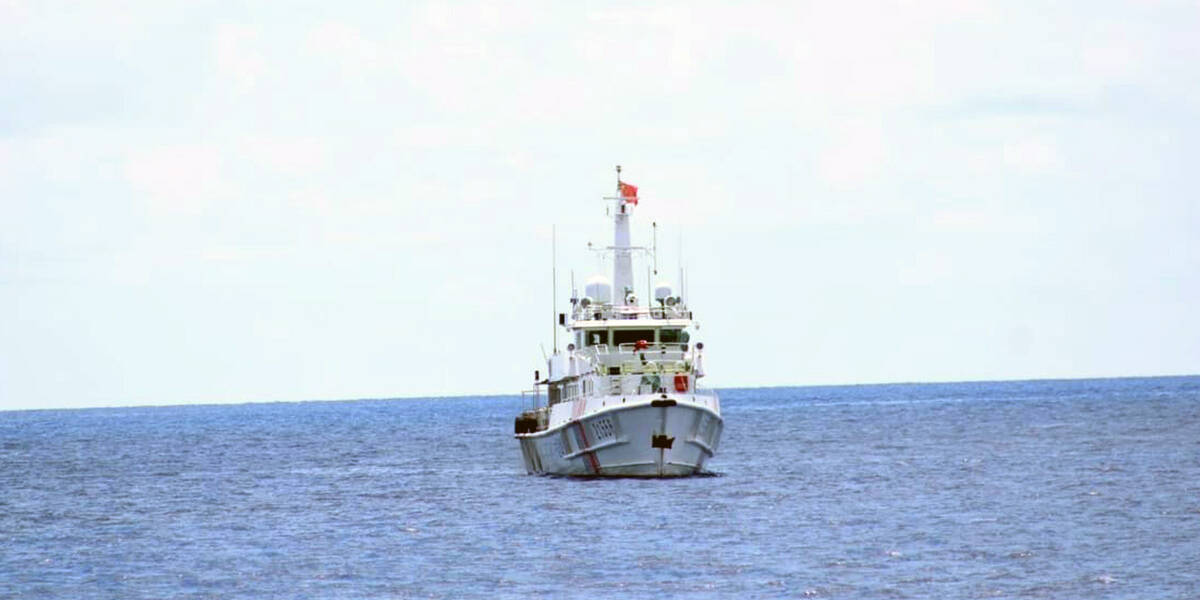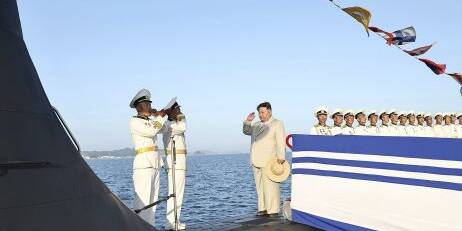Tharishini Krishnan, National Defence University Malaysia, for East Asia Forum
The security thinking that’s now captured Washington calls on allies and partners everywhere ‘to reinforce, renovate and buttress a world order that favours freedom’. The US Indo-Pacific strategy is shaped around the idea of integrated deterrence which US Secretary of Defense, Lloyd Austin, says means ‘using every military and non-military tool in our toolbox, in lockstep with our allies and partners’.
Maritime security was first raised as a key concern at the ASEAN Regional Forum (ARF), which called for more comprehensive guidelines for maritime security. Later, the Bali Concord II in 2003 addressed maritime security as a broader ASEAN problem, leading to the establishment of the ASEAN Maritime Forum (AMF) and Expanded ASEAN Maritime Forum (EAMF) in 2012. Regional collaboration began to take shape with efforts such as the ‘Eyes in the Sky’, part of the Malacca Straits Security Initiative. Additional regional partners further contributed to the effort, with Japan contributing to the Regional Agreement on Cooperation Against Armed Piracy in 2006.
These three mechanisms have been successful in generating commitment, creating relevance, seeking gradual expansion and networking while acting as a consultative platform.
ASEAN has long recognised the multifaceted nature of maritime issues in the region. The ASEAN Political-Security Community Blueprint 2025 stresses the objective to consolidate ASEAN’s previous achievements on maritime cooperation. To address this objective, ASEAN could take three potentially helpful actions.
Establishing an ASEAN-only maritime security partnership (AMSP) could reinforce commitment, solidarity and unity of all members. Countries like Laos, Thailand and Cambodia which do not border critical coastline in the region may not consider maritime issues their top priority. The maritime capability and capacities of ASEAN countries also vary in scope and reflect the diversity of the organisation. But it is a common interest of all ASEAN members, both maritime or landlocked states to ensure peace and stability of its neighbouring ocean space.
This has indirect implications for its economic development and security in its own backyard. In this sense, maritime cooperation becomes important and common to all members.
The establishment of the AMSPs should not be a signal that ASEAN countries have begun ganging up against big powers militarily. Instead, this partnership should champion improved responsiveness towards regional maritime issues and enhance confidence-building measures among ASEAN members. While existing forums already consider a wide range of maritime related issues., the AMSP would seek to further address these issues through institutionalising practical and functional cooperation. By doing so, the AMSP would act as an assurance that ASEAN is ready to face regional problems independently.
Since the ASEAN Defence Ministers Meeting has been functional in nature, its network can be expanded with stronger information collaboration through centralising the region’s Maritime Coordination Centres (MCC), currently mostly controlled by its own defence forces. This would not be a first instance of coordinated collaboration. The ASEAN Coordinating Centre for Humanitarian Assistance on Disaster Management is another testimony to the coordinated collaboration of ASEAN. If all these existing MCCs can be centralised under ASEAN, the resulting group could act as a hub for sharing, depositing and interpreting information. This concentration of resources would help to create stronger maritime domain awareness in the region.
Maritime threats in the region now include a myriad of issues at sea. To improve its operational ability, ASEAN could also implement a centralised task force. Many countries in the region have their own task force — the Malaysian National Task Force, which was established during the COVID-19 pandemic, has collaborated with 19 enforcement agencies in the country. The Thai-MECC is a similar module, given its cooperation with five agencies. This centralised task force would not be a grouping to counter the military presence or activities of big powers in the region, instead it is an ‘arrangement’ that helps ASEAN to mitigate trans-border crimes. This consolidation between related maritime agencies will strengthen the ASEAN cooperation on maritime issues.
The Trilateral Cooperative Agreement (TCA) shaping in 2017 is one example of ASEAN’s efforts to build on maritime cooperation independently. This is a collaboration between Malaysia, Indonesia and the Philippines and may be expanded into a Quartet Cooperation to include Brunei. The agreement includes maritime and air patrolling aiming at tackling transnational crimes in the Sulu Sea where each country acts as hub for operations. The Malacca Straits Coordinated Patrol is another example of regional efforts introduced in 2004 by Malaysia, Singapore and Indonesia to suppress piracy at the Malacca Straits.
ASEAN has precedents that showcase its spirit in shaping maritime cooperation, as such more maritime partnerships can be formed with the three proposed action plans to advance ASEAN’s objectives. This proposed platform established with a purpose of discussing maritime issues concerning the region will create confidence and trust in improving transparency in information exchange networks between ASEAN members. A strong maritime domain awareness will allow ASEAN to translate maritime security efforts into practical and effective responses. As a result, the region will attain a better balance in burden sharing regarding maritime security and generate stronger consolidation of maritime governance among ASEAN members.
The original article can be found here at East Asia Forum.
Dr Tharishini Krishnan is Senior Lecturer at the Department of Strategic Studies, Faculty of Defence Studies and Management at the National Defence University Malaysia.
Related Analyses
September 15, 2024
West Philippine Sea: Several factors force BRP Teresa Magbanua to return – PCG
0 Comments1 Minute


